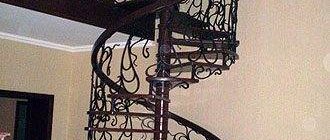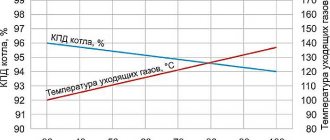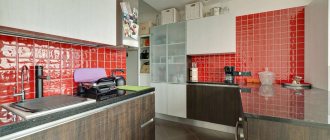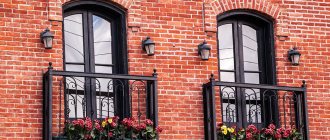Fair market for shared construction
Standard list of actions by creditors after a developer is declared bankrupt:
• the approved bankruptcy trustee publishes information on declaring the debtor bankrupt and on the opening of bankruptcy proceedings in the Kommersant newspaper (can be seen on the Internet on the newspaper’s website and in the printed version) and the Unified Federal Register of Bankruptcy Information on the Internet no later than ten days from the date of its approval, the message also indicates: the name of the debtor, his address and information identifying the debtor (state registration number of the record of state registration of a legal entity, state registration number of the record of state registration of an individual entrepreneur, taxpayer identification number); the name of the arbitration court in charge of which the bankruptcy case is pending, and the case number; the date the arbitration court made a decision to declare the debtor bankrupt and to open bankruptcy proceedings; closing date of the register of creditors' claims; information about the bankruptcy trustee and the relevant self-regulatory organization.
• monetary claims of construction participants (the developer’s obligation to return funds paid by the shareholder as a result of termination of the agreement for participation in shared construction, declaring it invalid, etc. and the amount of loss, which is determined as the difference in value under the agreement for participation in shared construction and the estimated the cost of the object of shared participation on the date of introduction of the bankruptcy procedure) and demands for the transfer of residential premises are sent to the bankruptcy trustee with the attachment of documents confirming the legal relationship (agreement with all amendments and attachments, confirmation of payment, court decisions, etc.).
An application for inclusion in the register of creditors' claims is prepared in free form with a description of the situation.
• the register of creditors' claims is subject to closure after three months from the date of publication of information on declaring the debtor bankrupt and on the opening of bankruptcy proceedings.
• the bankruptcy trustee is obliged to provide persons participating in the bankruptcy case with the opportunity to familiarize themselves with the register of claims for the transfer of residential premises and the grounds for including the claims of construction participants in such a register.
• the bankruptcy trustee considers the claim of a construction participant presented during the bankruptcy case and, based on the results of its consideration, no later than thirty working days from the date of receipt of such a claim, enters it into the register of claims for the transfer of residential premises if the claim is justified.
• if the bankruptcy trustee refuses to include the requirements in the register, this refusal may be challenged in court in a bankruptcy case; objections to the bankruptcy trustee’s refusal may be filed no later than fifteen working days from the date the construction participant receives the bankruptcy trustee’s notification about the results of consideration of this requirement.
• other claims of creditors (including demands for the inclusion of penalties in the register of creditors' claims of the developer) are considered by the arbitration court in charge of which the case is pending.
In the future, the creditor whose claims are included in the register of creditors' claims has the right to participate in meetings of construction participants/creditors, the holding of which will be reported by the bankruptcy trustee by posting information in the Unified Federal Register of Bankruptcy Information on the Internet and in the Kommersant newspaper.
Pennies instead of housing: how Vorobiev and DOM.RF solve the problem of shareholders
Shareholders of a 17-year-old long-term construction project in Khimki near Moscow are being deprived of their last hope of getting apartments - the DOM.RF fund, which was launched by Governor Andrei Vorobyov for construction, is offering meager compensation instead of housing. Shareholders call what is happening a raider takeover and express confidence that they want to resell their house as a business center. Details of the conflict between citizens and authorities are in the PASMI material.
Igor Vodopadov, addressed the PASMI column “Report corruption . He and four hundred of his fellow sufferers signed contracts for the purchase of apartments in Khimki back in 2003, but have not yet received housing. They want to get rid of equity holders with payments that cannot be used to buy real estate in the Moscow region. Desperate, they plan pickets at the construction site of the ill-fated house.
Leader of long-term construction
Delivery of the house at the address: st. Cherry, building 31 building 6 in Khimki near Moscow, 430 shareholders are waiting for the second decade. Agreements for the purchase of apartments were concluded in 2003. In the same year, Monolitgradstroy LLC began construction of a building with a height of 14-17 floors; completion of construction was planned for 2006.
But these plans were not destined to come true - in 2010 construction was suspended, and in 2011 the developer was declared bankrupt, and in 2012 external management was introduced in order to attract an investor to complete the house.
Since that time, the house has been on the list of problematic objects, but neither the Ministry of Construction of the Moscow Region nor the administration of the city of Khimki has taken any real action to complete the building.
Moreover, as Igor Vodopadov, one of the shareholders, told PASMI, city officials actively opposed the efforts of the external manager to attract large investors to the construction site. “Apparently, the administration pursued its own interests, insisting on involving companies close to it in the construction,” noted Igor Vodopadov.
There were many such companies from 2012 to 2021, but for various reasons construction never continued. So, in 2021, officials reported that the house will be completed by Zodiac LLC. In exchange for compensation plots and preferences for other projects, they promised to deliver the house by the end of 2021, completely changed the project, but the company never started construction and soon went bankrupt.
Deceived shareholders held protests, went on hunger strikes, wrote petitions addressed to the Governor of the Moscow Region Andrei Vorobyov and Russian President Vladimir Putin , appealed to prosecutors at all levels, up to the general, but all this led to nothing.
“The current head of the administration, Dmitry Voloshin, promised every time to resolve the problem within one or two weeks, but months passed and nothing happened,” says the defrauded shareholder.
To build or not to build
At the end of 2021, the head of the Khimki administration announced the impossibility of completing the construction of a house on Vishnevaya. As a justification for refusing to complete construction of the problematic facility, officials cite the results of a construction and technical examination. Specialists from the State Budgetary Institution “MOSOBSTROYTSNIL” came to the conclusion that “the technical condition of the building is preliminary assessed as being of limited operability and not suitable for completion of construction.”
Meanwhile, the shareholders, at their own expense, conducted two independent examinations and received exactly the opposite results. Thus, in the conclusion dated December 2021, signed by engineers from Laboratory of Construction Expertise LLC, it is stated: “Resumption of construction of a multi-storey apartment building is possible subject to the implementation of recommendations for strengthening structures with defects according to an additionally developed project.”
Vorobiev's solution
Buyers of apartments in the ill-fated building began to have hopes of finding housing at the end of last year. Andrei Vorobyov , and Vitaly Mutko , who at that time held the post of Deputy Prime Minister of the government, came to the problem site
On November 14, 2021, media controlled by the government of the Moscow region reported that Vorobiev and Mutko agreed that the Fund for the Protection of the Rights of Citizens - Participants in the Shared Construction of DOM.RF would be involved in solving the problems of the facility on Vishnevaya Street.
As reported on the official website of the Fund, this organization was created by the Russian government in 2021 with the aim of regulating relations between developers and shareholders. But in this case, instead of a settlement, a new conflict resulted.
As Igor Vodopadov explained, DOM.RF began to contradict itself in terms of resolving the issue of the fate of the problematic object. Against the backdrop of statements about the building’s unsuitability for operation at the design load, representatives of the Fund for the Protection of Shareholders’ Rights at a meeting of the Moscow Arbitration Court stated that the house would be completed.
“They misled the court in order to achieve the transfer of the bankrupt from external to bankruptcy management, appointing their own bankruptcy manager, Yulia Chernikova, and illegally removing the external manager, Lev Mirabyan, who spent 8 years fighting the bureaucracy and raiders in our house, and sought a solution with us in completion of the house. Now we have simply become hostages of DOM.RF,” noted Igor Vodopadov.
There has not yet been a meeting of the Supervisory Board of the Fund for the Defense of Rights, at which it should be decided whether the house will be completed, but shareholders have already been notified that they will receive compensation instead of apartments.
As a justification for refusing to complete the problematic facility, DOM.RF cites data from Rospotrebnadzor on excess noise levels from Sheremetyevo Airport. Meanwhile, an independent examination carried out by shareholders concludes that completion is possible if structures that compensate for aircraft noise are installed.
Interest from the sky
Particularly indignant among shareholders was the fact that, according to the DOM.RF document, the degree of readiness of the building at the address ul. Cherry, house 31, bldg. 6 is 29 percent .
“Of the six entrances, four have been built completely - under the roof, in another one, 15 out of 17 floors have been erected. What 29 percent can we talk about?” — Igor Vodopadov is perplexed.
Moreover, shareholders have at their disposal the results of three examinations, in which the readiness of the house is estimated at 75-80%. The same figure is contained in the response to a request from the general director of Monolitgradstroy LLC from the administration of the Khimki city district. In a document dated 2010, the then head of administration Vladimir Strelchenko reports that the overall readiness of the capital construction project at the above address is 75-80%.
Save on trouble
Meanwhile, according to shareholders, the unrealistic figure of 29% was indicated for a reason, and the issue here is not only and not so much the reluctance of DOM.RF to complete the building on Vishnevaya.
The fact is that based on the degree of readiness of the house, they plan to calculate compensation for failed apartment owners. The basis for their calculation will be the cost of real estate in the same monolithic brick houses, at the same stage of construction, so DOM.RF will be able to significantly save on understating the figures.
“Representatives of shareholders have already been informed that compensation will be approximately the cost of the contract concluded in 2003, plus 15-20%,” said Igor Vodopadov. “For example, I then paid about 530 thousand rubles , so there is no need to talk about buying housing with payments from DOM.RF - the cost of one-room apartments with rough finishing in monolithic houses in Khimki starts from 4.5 million rubles. ” .
It is possible that this is not all the savings. Shareholders are confident that no one is going to demolish their house, and a second life awaits it. “The house will either be sold at auction to a private investor, after which they can set up some kind of business center there and make good money on rent. In any case, the head of the administration Dmitry Voloshin spoke about the possible transfer of the building to the category of non-residential premises,” said Igor Vodopadov.
Shareholders do not agree with this approach to solving their problems. They consider the actions of the Foundation for the Defense of Citizens' Rights to be a raider seizure of their property and intend to seek completion of the building. This coming Saturday, July 18 at 1 p.m., a protest action is planned at the long-term construction site on Vishneva.
However, as it turned out after the publication of the article, there is a group of shareholders of the house on Vishnevaya, which takes the opposite position. They believe that DOM.RF is on their side and agree to pay compensation.
If you have information about corruption violations by officials in the Moscow region and other regions of Russia, write to the PASMI section “Report corruption.”
Project No. 31 /ANNELI/
MAIN STRUCTURAL UNITS
FOR YOUR CONVENIENCE, WE TRIED TO SHOW THIS AS CLEARLY as possible.
1
Bored foundation
- Beam 200x150 mm
- Asbestos pipe
- Concrete M-300
- Armature
Point Point Point Point
The standard option for this project is a bored foundation. This is the best option; it is suitable for almost any type of soil. The main advantages of this foundation are cost-effectiveness, reliability, quick installation time and the ability to carry out work at any time of the year.
I tell you how we tighten screw piles
Ready-made country house made of profiled timber with an attic (according to project No. 12)
House made of profiled timber in the village of Povadino 6x9 m
We are building a frame house in the village of Melenki, Solnechnogorsk district (October, 2021)
Reconstruction of a country house in SNT Tebenki, Solnechnogorsk district
2
Monolithic reinforced concrete slab
- Foundation slab
- Grillage
- Armature
- Sand
- Insulation
Point Point Point Point
The foundation of our houses can be a monolithic reinforced concrete slab 200 millimeters high with a grillage. To further strengthen the structure, we use double reinforcement.
3
First floor floor installation
- Tile
- Glue
- Cement-sand screed
- Heated floor pipes
- Reinforcing mesh
- Polyethylene film
- Expanded polystyrene foam
- Waterproofing
- Base - concrete slab
Point Point Point Point Point Point Point Point
An obligatory step in the construction of the first floor floor in houses is the laying of a waterproofing film, which does not allow moisture to seep into the room. Next comes a thick layer of extruded polystyrene foam, an effective thermal insulation material. If the owner decides to equip the house with a warm water floor system, then a reinforcing mesh is installed for subsequent fastening of the pipes. A cement screed is made on top of them. It consists of high-grade concrete, sea sand and fiberglass. The last component allows you not to resort to additional concrete reinforcement, which means reducing costs without compromising on quality. The flooring of the customer's choice is laid on top of the screed.
More than 70 clients have entrusted us with the construction of houses due to the fact that we have our own production in the Vologda region
We harvest wood in winter, which allows us to preserve the properties of the material, and we can guarantee the service life of the house for at least 50 years.
Our production is a full-cycle production, namely sawing round timber, sharpening timber on four sides in one pass, cutting crown joints according to the project.
We have a strict quality control system at all stages of the production and technological cycle.
We can erect a structure from timber according to a ready-made standard design in the shortest possible time.
Our wood is an environmentally friendly material. It is safe and capable of creating the correct microclimate indoors. There is no doubt about the correctness of the choice.
Thanks to our own production, we can complete even the most complex and large-scale projects of wooden houses made of timber in the shortest possible time!
We harvest timber, dry it, produce regular, planed and profiled timber of various sections, carry out control assembly of houses and bathhouses from timber with markings
Thanks to German technological equipment, the influence of the human factor on quality is eliminated as much as possible from the production process, and the high level of automation makes it possible to speed up even very complex and urgent work.
Our own production allows us to build frame houses from high-quality boards with the correct dimensions, according to GOST.
4
Wall construction / timber simulator
- OSB board
- Vapor barrier film
- Basalt wool 150MM
- Frame 50Х150
- Wind protection
- Lathing
- Facing
Point Point Point Point Point Point
The wall panels of our houses are a multilayer structure. They are based on a wooden frame 50X150 mm, filled with insulation - a 150 mm layer of basalt wool. On the inside, a light but durable OSB board covered with a vapor barrier film is attached to the frame. On the outside there is a 25 mm layer of fiberboard for heat and sound insulation of the house and for wind protection.
5
Installation of partitions
- Finishing
- Lathing
- Vapor barrier film
- Basalt wool
- Vapor barrier film
- Lathing
- Finishing
Point Point Point Point Point Point Point
The basis of the interior partitions is a wooden frame 45X95 millimeters. A 150 mm layer of basalt wool is used as insulation. A vapor barrier film is attached to it on both sides. The final layer is an OSB board, on top of which finishing is performed.
6
Interfloor covering arrangement
- Carpet
- Substrate
- OSB board
- Basalt wool
- Logs 45Х195
- Vapor barrier film
- Lathing
- Ceiling finishing
Point Point Point Point Point Point Point
For the construction of floors between floors, 45X195 mm logs are used, filled with a 200 mm layer of basalt wool insulation. A vapor barrier film is laid under it, and an OSB board and underlay for the floor covering are placed on top.
7
Roofing installation / metal tiles
- Metal tiles
- Lathing
- Bar 45Х45 ventilated gap
- Wind protection film
- Rafters 45Х195
- Basalt wool 200MM
- Vapor barrier film
- Lathing
- Ceiling finishing
Point Point Point Point Point Point Point Point
As roofing materials, we use metal tiles with a maximum thickness of 0.53 millimeters, vapor barrier films, and insulation - a 200-mm layer of basalt wool. A ventilated gap is left between the sheathing and the tiles, thanks to which condensation is removed from under the roofing.











